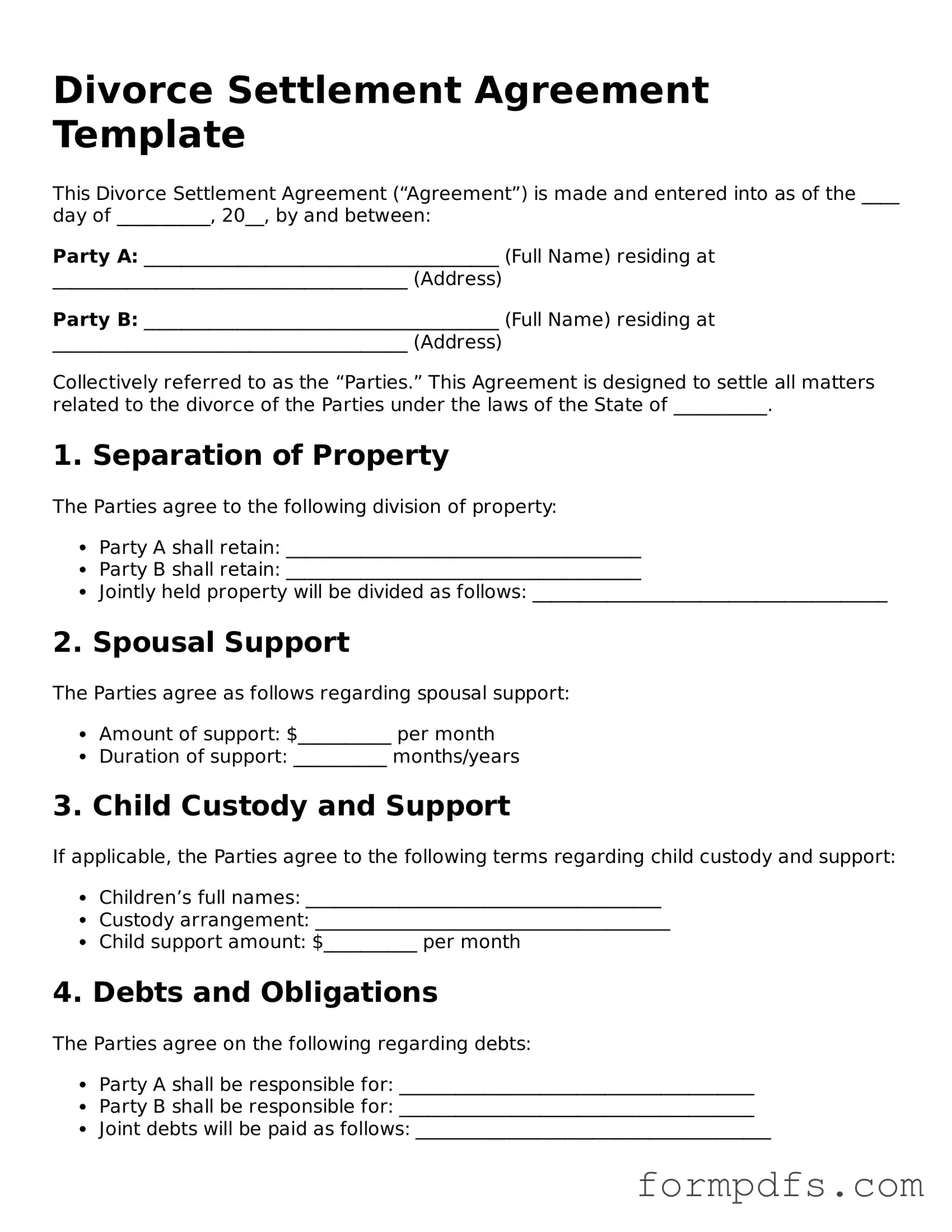What is a Divorce Settlement Agreement?
A Divorce Settlement Agreement is a legal document that outlines the terms and conditions agreed upon by both spouses during a divorce. It typically covers issues such as property division, child custody, child support, and spousal support. This agreement serves to finalize the divorce process and can help prevent future disputes.
How do I create a Divorce Settlement Agreement?
To create a Divorce Settlement Agreement, both parties should first discuss and negotiate the terms they agree on. It is often helpful to consult with legal professionals to ensure that the agreement meets legal standards and protects both parties' interests. Once both parties reach an agreement, the document should be drafted, reviewed, and signed by both spouses.
Is a Divorce Settlement Agreement legally binding?
Yes, once signed by both parties and approved by the court, a Divorce Settlement Agreement is legally binding. This means that both spouses are required to adhere to the terms outlined in the agreement. If one party fails to comply, the other party may seek legal enforcement through the court.
Can a Divorce Settlement Agreement be modified?
Yes, a Divorce Settlement Agreement can be modified under certain circumstances. If there is a significant change in circumstances, such as a change in income or a change in the needs of the children, either party may request a modification. This usually requires a formal process in court to ensure that the changes are documented and legally recognized.
What happens if we cannot agree on the terms?
If both parties cannot reach an agreement on the terms of the Divorce Settlement Agreement, they may need to consider mediation or other dispute resolution methods. If these efforts fail, the case may proceed to court, where a judge will make the final decisions regarding the terms of the divorce.
Do I need a lawyer to create a Divorce Settlement Agreement?
While it is not legally required to have a lawyer, it is strongly recommended. A lawyer can provide guidance, ensure that your rights are protected, and help you understand the implications of the agreement. Having legal assistance can also help avoid potential issues that may arise in the future.
